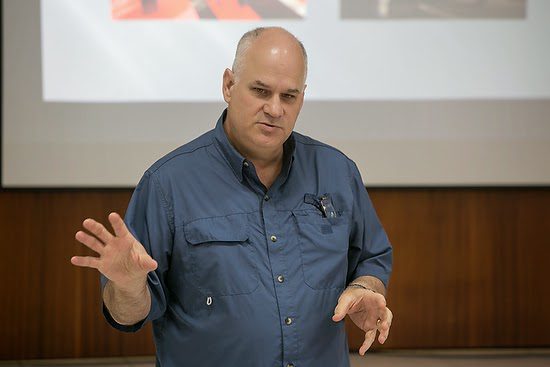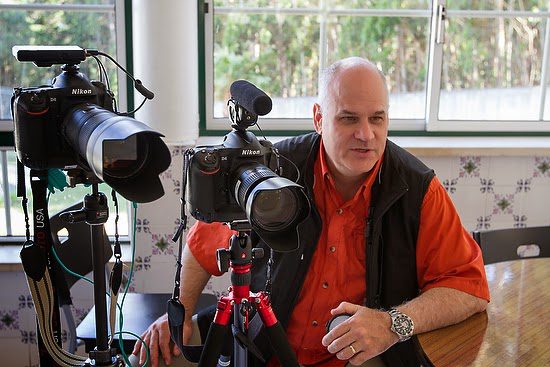This photo is of the Mexico/US border in Douglas, Arizona. Many children are now crossing the Mexican border without their parents. You can read more about this here. Why? They are desperate to solve a problem they have, and even risking their lives in the middle of the desert is better for them than remaining in their situation.
I mention this to remind us that when people come to you with a problem, you are either part of the solution or not.
Naysayers
nay•say•er: a person who says something will not work or is not possible : a person who denies, refuses, or opposes something
For many years while I was a staff photographer, people classified me as a “naysayer” due to how often people came to me to ask me to do something, and I explained why it wasn’t possible.
I remember when it finally hit me how negative I was when my co-worker jokingly said that I always was saying no. While the comment hurt me, I realized he was right.
Are you a Naysayer?
My experience has been there are more naysayers on staff than freelance. You cannot grow your business by saying no. It would help if you learned how to say yes. Those freelancers who say no too often are soon looking for another career. However, being on staff is a little more protection than being negative. However, this has a time limit as well.
A good clue that you might be a naysayer is other people are starting to do what you perceive as your job.
“Why are they bringing in an outsider to do what I am supposed to do?” is a question you might be asking if you are a naysayer. While working as a staff photographer for a college, I couldn’t understand why the admissions office was hiring freelance photographers to shoot their recruiting catalogs.
Hiring an outsider is not always due to being a naysayer. Many colleges around the country have staff photographers who do most all the work for a school. However, when it comes to the school’s advertising, they are looking for a particular style. You should be fine if you offer to help them and the photographer is coming in to shoot.
If you feel threatened by this outside photographer, take a deep breath. Ask yourself if anyone has come to me and I answered them with reasons their request isn’t possible. If you did, then you should feel threatened.
Too often, people take the attitude that it is their job and the rules say I have this responsibility. But, unfortunately, you do have this until you become an obstacle to people in the company trying to get their projects done.
Be an Optimist
The opposite of the Naysayer is the Optimist. When people come to you with requests, learn how to turn their proposal into a reality. While someone’s request has some vast problems look first for something positive. A big clue is that if nothing seems good about their request at the bare minimum, you can start by being excited that they came to you with their idea.
“I am honored that you thought of me to help you with your project” is a great way to start on a positive note.
When addressing an obstacle, talk about a solution. For example, let’s say you don’t have a particular piece of equipment to make that happen. Tell the client if we can rent or buy a part you don’t have that would make it possible. Maybe you need an extra hand to make it happen. For example, for me to move the couch from this room to another, I need some help carrying it, would you or can you find someone to help? I am more than willing, but I am busy now and could use some service to find another person.
The trick is to let them know from your experience that we need to address something for success. I am more than willing to help you, but my boss has me working on these projects. So while I can ask them to let me help you, it would be better for you to request my time.
Remember Storyline
Looking at the storyline elements will help remind you why you need to be the Optimist and not the Naysayer.
The person coming to you has a Conflict/Task and is looking to you to help them as a Guide/Resource. If you say no, their issue doesn’t go away. Like Dorothy in the Wizard of Oz, she will move down the yellow brick road to find the solution to her problem.
The difference between the Optimist and the Naysayer is the Assignment they give to the person. Please give them the solutions [Actions] to help their story turn into a comedy, not a Tragedy. You saying no is just not an option for someone who needs to solve a problem.
When someone proposes a new program that will compete with your schedule, tell them how you want to help and need to understand their goals. Also, ask for their critique on how the current program you are doing isn’t meeting those needs. Don’t be quick to defend your program.
If you listen, you may learn that your program isn’t serving all the needs, or maybe you need to tweak the communication about your program to show how it addresses those needs. Either way, there is a perception that it is not meeting the audience’s needs.
Your role may change going forward, but learning how to listen and adjust makes you more valuable to them and the organization.
As long as you are helping the organization address the new issues facing it, you are part of the solution and will have a job in the future. If you try and protect and keep things as they are, you are not growing and slowly helping the organization die.






































